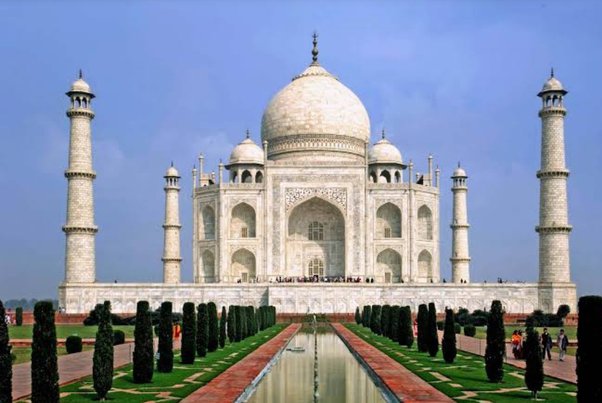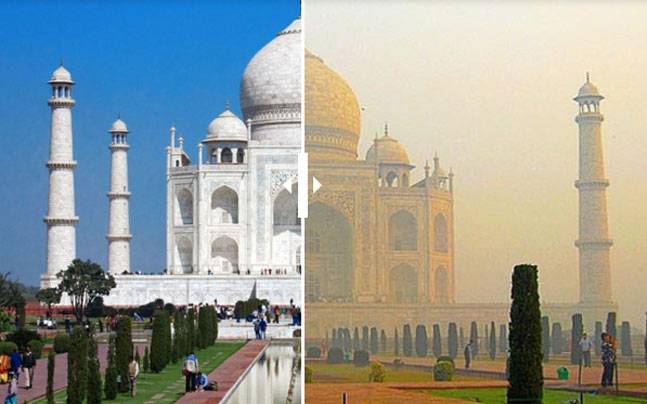
Disadvantages of the Taj Mahal
The Taj Mahal is a famous UNESCO World Heritage Site that attracts millions of visitors each year. However, its beauty is threatened by pollution and other environmental damage.
It is said that the Taj Mahal glows in pinkish hue in the morning, turns pearly white in the afternoon, and is golden at night. This is a true beauty.
1. It is a tourist trap
The Taj Mahal is one of the most famous World Wonders, and for good reason. The 17th-century mausoleum built in memory of Shah Jahan’s third wife is a breathtaking example of Mughal architecture and a UNESCO World Heritage Site. But it can also be a bit of a tourist trap. From overpriced drinks to unruly crowds, there are a few things to keep in mind when visiting the Taj Mahal.
The best time to visit the Taj Mahal is in the morning, before the gates open. This will give you the chance to get pictures without a bazillion other people in them. Also, it’s usually a little cooler in the morning.
The Taj Mahal is located near the polluted Yamuna River, which has caused it to deteriorate over the years. The water contains high levels of nutrient pollution, which allow river-derived microorganisms to grow on the marble. These microorganisms can cause the Taj to discolour and turn green over time. In addition, carbon monoxide from cars and other sources can erode the surface of the Taj.
2. It is expensive
Agra’s fabled Taj Mahal is so revered that even the most jaded traveller gets goosebumps when they catch a glimpse. Its elegant gateway arch and flawlessly reflected in the waters of the Yamuna river inspire awe in all who see it. It has been called a “poet’s muse”, an architectural marvel, and, by Bill Clinton, a tribute to love.
But the Taj Mahal is in trouble, and it’s not just from the pollution that has engulfed Agra. It is also threatened by the depletion of its water supply. The Yamuna is one of the most polluted rivers in the world, with industrial facilities dumping sewage into its waters. This has reduced the fish population in the area, allowing mosquitoes and flies to proliferate.
The government has taken measures to protect the Taj Mahal, including a ban on visitors from some countries, but it is still not enough. The monument needs more money and better protection. It needs a buffer zone around the Taj, which would be free from traffic and construction. This would also help to keep the air quality in check.
3. It is crowded
The Taj Mahal is crowded, especially during peak season. It can be hard to take photos without a bazillion other people in them. To avoid crowds, try to arrive at the Taj Mahal before it opens. It is usually less crowded at sunrise than at sunset, and it also has more beautiful light for photographs.
The main source of crowding is air pollution, which is caused by a combination of burning fossil fuels and dumping raw sewage into the Yamuna River. The acid rain from these pollutants tarnishes the marble and erodes its delicate surface. It can also cause respiratory problems for visitors.
Moreover, the air quality is affected by smoke from funeral pyres and burning trash near the Taj Mahal. These pollutants contaminate the water that the Taj Mahal and its cemetery depend on for water and nutrients. The Yamuna is also polluted by industrial and residential chimneys and by untreated sewage. The nutrient-rich water seeps into the Taj Mahal’s porous stones and stains them green. Various experiments to reverse this discoloration have failed.
4. It is dangerous
The Taj Mahal, a symbol of love and one of the seven wonders of the world, is in danger of losing its beauty. It is being threatened by pollution and environmental degradation.
In the past two decades, the monument’s marble has become a yellowish color due to atmospheric pollutants such as sulfuric oxide and nitrogen dioxide. These pollutants are released into the air by burning fossil fuels. When they combine with water vapors, they form acid rain. This acid rain discolors the Taj Mahal and erodes its white marble surface.
Another threat to the Taj Mahal is the receding river Yamuna. The eroding water threatens to weaken the sal wood stakes that support the structure. It is also causing the land to move under the Taj, jeopardizing its stability.
Travelers who visit the Taj Mahal today are shocked to see its deteriorating state. The ruins are full of broken minarets and damaged turrets. In addition, the Taj’s surroundings are polluted and eroding fast. In 1996, the Supreme Court of India ordered that measures be taken to protect the Taj Mahal from these dangers.
5. It is a waste of time
The Taj Mahal is a tribute to the undying love of the Mughal emperor Shah Jahan and his beloved wife Mumtaz. It is an architectural marvel, a symbol of India’s cultural heritage, and a source of inspiration for poets, artists, and lovers around the world. Unfortunately, the Taj is also facing some serious challenges.
Pollution is a major problem for the monument, causing its marble to turn yellowish-brown and affecting the edifice’s structural integrity. Air pollution is caused by vehicle emissions, burning wood at cremation ghats, and industrial activities. These pollutants contain light-absorbing carbon, which can cause the marble to discolor.
Researchers are working on ways to prevent further discoloration. One method involves coating the Taj Mahal with a clay poultice that absorbs pollutants and can be peeled away. Another involves reducing the amount of vehicles on the road and stopping the burning of waste near the monument.
Despite these efforts, the Taj Mahal is still deteriorating rapidly. It is important to take steps to protect it from further damage, and to find sustainable ways to manage its maintenance.



WordPress database error: [Table './casirzxo_wp218/wp93_comments' is marked as crashed and last (automatic?) repair failed]
SELECT SQL_CALC_FOUND_ROWS wp93_comments.comment_ID FROM wp93_comments WHERE ( comment_approved = '1' ) AND comment_post_ID = 186 AND comment_parent = 0 ORDER BY wp93_comments.comment_date_gmt ASC, wp93_comments.comment_ID ASC